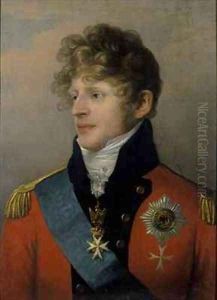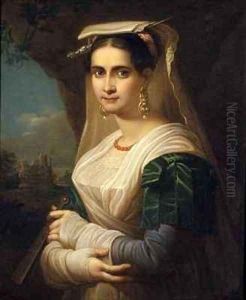Friedrich Ludwig Theodor Doell Paintings
Friedrich Ludwig Theodor Doell, also known as Theodor Doell, was a German sculptor who lived during the 19th century. Born on August 13, 1789, in Weimar, Germany, he was part of a generation of artists who were active during a period of significant cultural and political change in Europe, marked by the aftermath of the Napoleonic Wars and the various revolutionary and reform movements of the time. Despite the turmoil of the era, the arts flourished under the patronage of various European courts and the rising bourgeoisie, who sought to express their status and ideals through the commissioning of art and architecture.
Doell's career as a sculptor would have been influenced by the prevailing neoclassical aesthetic, which was dominant in the early part of the 19th century. This style sought to emulate the arts of ancient Greece and Rome, emphasizing harmony, clarity, and idealized forms. In sculpture, this often translated into works that highlighted the beauty of the human body, celebrated heroic or mythological subjects, and aimed for a sense of timeless perfection.
Despite the lack of widespread information about his personal life and career, Doell would have been part of a network of artists, craftsmen, and thinkers contributing to the rich cultural scene of his time. His works may have included portrait busts, funerary monuments, and decorative sculpture for public and private spaces. These works would have required a mastery of various materials, including marble, bronze, and terracotta, and might have been displayed in public squares, gardens, palaces, or salons.
Theodor Doell passed away on February 21, 1863, in Jena, Germany. While he may not be as well-known as some of his contemporaries, his life and work were part of the broader tapestry of 19th-century European art. Today, the study of artists like Doell contributes to our understanding of the cultural and historical context of the period, shedding light on the many skilled individuals whose work collectively shaped the artistic heritage of their time.

